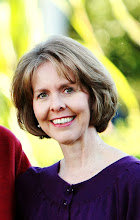All good things must come to an end. This trip has been a good thing -- good time to share with a dear sister, a good opportunity to meet prospective students for Southeastern University, and a good chance to learn more about what makes the French Gothic cathedral so monumental.
In spite of my minority status among the other students/pilgrims and my distance from home, I felt very much at home at the Journees d'Etude at Chartres. Part of that is due to my being an incurable francophile, but there's more to it than that. Walking the labyrinth, climbing down into the crypt, testing my knowledge of scripture on the statuary, hearing the notes of the boys' choir rise up to the vaults, and simply attempting to imagine the scenes these walls have witnessed are experiences that the most complete library can't give me. It was like visiting a familiar friend from your past, only this time you sit down together and get beyond the superficial, have a real conversation. And you sit quietly while your wise, old friend tells her story.
I've read so much about the harmony and uniformity of the French Gothic cathedral. I've marveled over Panofsky's integration of Scholastic order with the cathedral's perfect categorization and symmetry. I've been enthralled to note the rich iconography and symbolism that fills Male's catalog of Gothic imagery. Philip Ball and Anne Prache -- noted experts on virtually every aspect of these great structures -- fill in the blanks. Not even the most scientific and artistic analysis, though, can explain the feeling that the cathedral imparts: transcendence, peace, holiness, and a reverential awe for the God it honors and for the immeasurable faith of those who built it.
Then Paris -- the treasures of the Cluny, passing by old familiar sites like Notre-Dame and Sainte-Chapelle. I've returned to Paris several times since my student days, and each time the sounds and scents of this great city come rushing back to me in a wave of familiarity. This time I ventured north to discover St-Denis and learned why Abbot Suger was so emphatic on bringing light and color into the interior of the church (now cathedral). The play of light -- magnified by the incredible array of stained glass -- defies description and must be experienced! For the Christian pilgrim, the link between earthly and divine is palpable in the glow of its interior.
We flew early this morning from Vienna back to Paris. My sister wings her way back to
 Ohio today, I depart for Florida in the morning. Dinner's on my own tonight in the town of Roissy near CDG airport. At a little creperie, I enjoy one more galette au bleu and get to eavesdrop on a few last conversations en francais. It's rainy and late as I walk back to my hotel. I pass a small, very old-looking church in the village. If only it were still open so I could make one more friend, hear her story... a la prochaine!
Ohio today, I depart for Florida in the morning. Dinner's on my own tonight in the town of Roissy near CDG airport. At a little creperie, I enjoy one more galette au bleu and get to eavesdrop on a few last conversations en francais. It's rainy and late as I walk back to my hotel. I pass a small, very old-looking church in the village. If only it were still open so I could make one more friend, hear her story... a la prochaine!



 Built on the site of an ancient cemetery with graves dated back to the 4th century, the original 12th century cathedral was a Romanesque structure that eventually made a full evolution to late Gothic with major construction ceasing in the early 16th century. Two major fires during that period resulted in renovations that continually updated the Gothic elements of the building.
Built on the site of an ancient cemetery with graves dated back to the 4th century, the original 12th century cathedral was a Romanesque structure that eventually made a full evolution to late Gothic with major construction ceasing in the early 16th century. Two major fires during that period resulted in renovations that continually updated the Gothic elements of the building.






